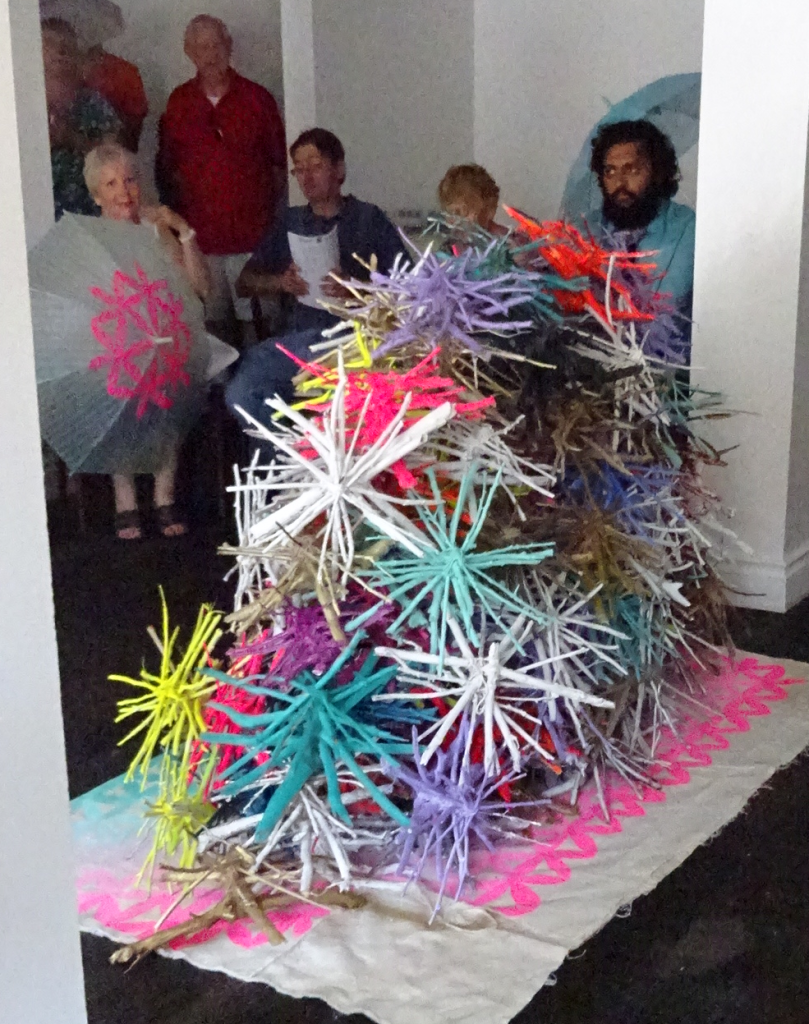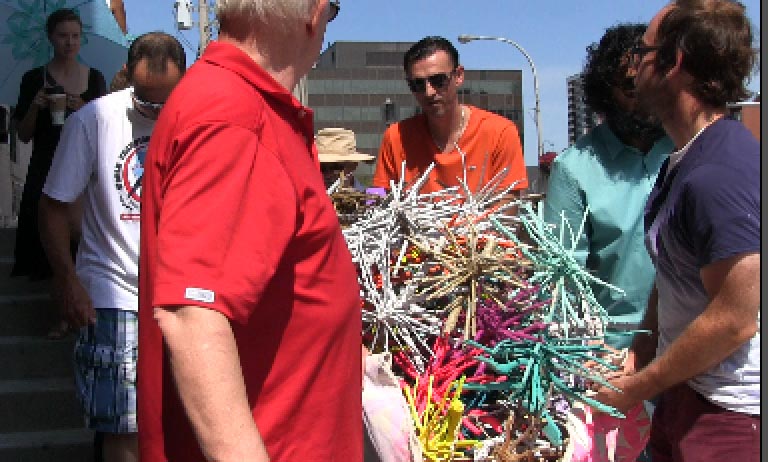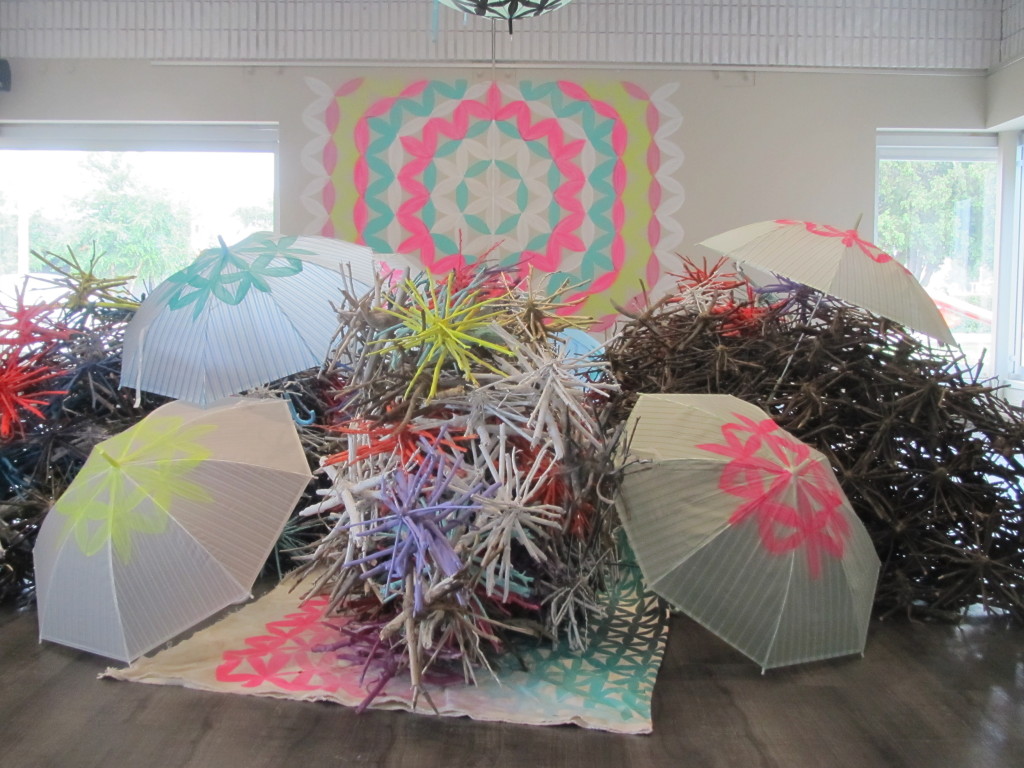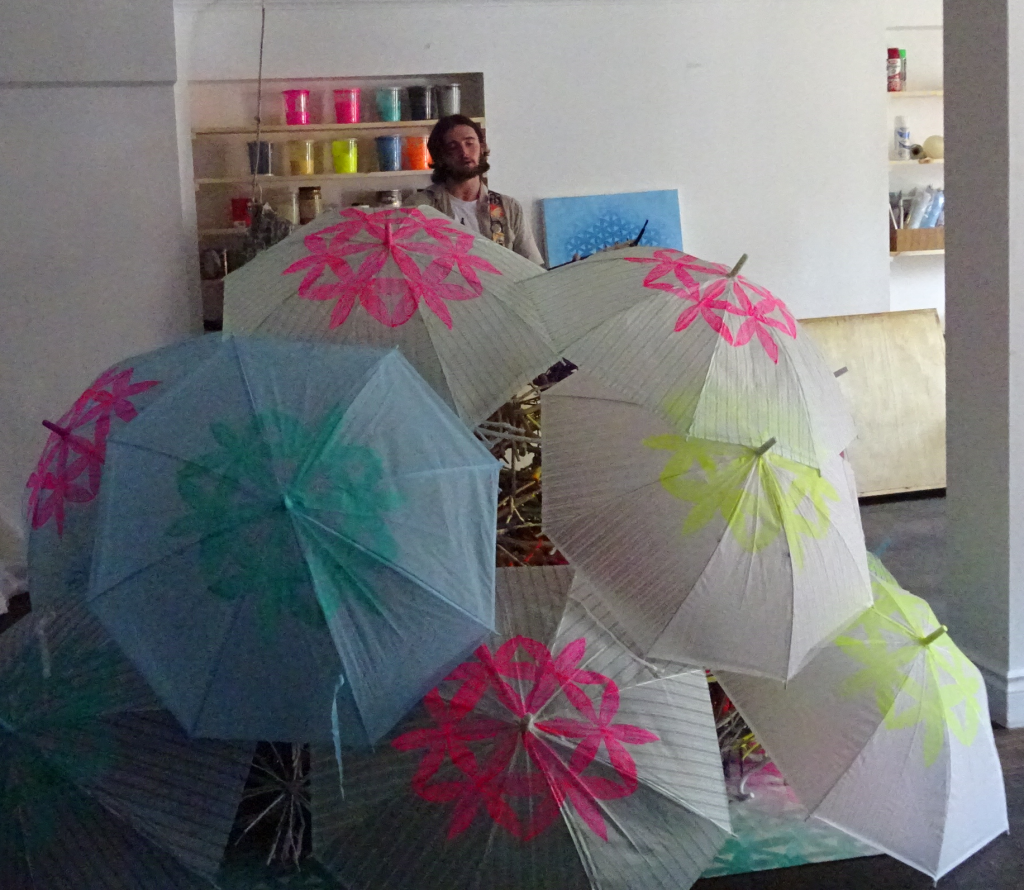August 20, 2015
BURLINGTON, ON
Kyle Tonkens uses approaches of both Performance Art and Installation Art in his most recent artwork, entitled “The Funeral Procession of the Beloved Departed”.
Performance Art is a non-traditional art form that uses two or more arts: these could be acting, painting, poetry, dance, music, etc. My own perspective focuses on the visual impact of the performance.
Performance Art often uses symbolism and concepts that are difficult for some to comprehend without supplementary information. It can be like trying to read a foreign language without translation notes.
“The Funeral Procession for the Beloved Departed” started on John Street, Burlington. People gathered in celebration of a person’s life, and participants were encouraged to recall their own loved ones. Tonkens referred to the procession being for all our beloved departed, but referred specifically to a woman named Henrietta Markham, and quoted her poetry. Henrietta was Tonkens’ grandmother. During a recent interview, Tonkens disclosed that he used Henrietta’s “voice” in presenting his own poetry. This is in accord with his belief that all things in life and death are interconnected – which is a key concept of the exhibition.
In the middle of the John Street room there was a mound of what the artist had previously referred to as “hand-bound wood rosebuds constructed of gathered sticks and bound together by jute twine and wire”. The rosebuds are painted in solid bright colours creating a colourful mound. Some guests were given neon-coloured rosebuds, or a painted parasol, to carry in the cortege.
Aaron Zukewich played music on his soulful saxophone in the room, and during the procession.
They bore the funerary mound down John Street and along Lakeshore Road to the Art Gallery of Burlington. Once at the RBC Community Gallery, the mound was gently placed with five other mounds on the floor. Those who had carried painted rosebuds and parasols from John Street placed them on one of the six funeral mounds.
Some of the mounds had darker painted rosebuds or natural wood, symbolizing those separated from us some time ago. The contrast between the brightly coloured rosebuds and the earth-toned rosebuds gave the impression of after-life energy that was still within the mound and had not yet departed.
The artist refers to the painted walls as incorporating “the flower of life pattern”. This resembles Hindu mandala symbols — geometric and very spiritual. The three mandala-like, neon-coloured wall paintings are partly mirrored by the lines on the parasols. Umbrellas with a similar appearance are suspended from the ceiling: they represent the spirits, after release from life, connected to the mounds.
The Performance Art drew a crowd of participants. Tonkens did not venture too deep into the non-traditional inter-art practices of performance art. It was intriguing how he straddled non-traditional and traditional art and their approaches to the subject. Conceptually, Tonkens is exploring complex issues that might not easily be communicated to many of those present. The cortege was somewhat like a New Orleans funeral procession, but the music played was more solemn and mournful. It felt ritualistic, in a metaphysical way.
At the AGB, the artist continued his performance by greeting and thanking the participants as one might at a funeral. Tonkens’ belief is that we should be truly grateful. What makes Tonkens’ performance differ from other memorial services is that he gave some of the audience members a gift of a small, square acrylic painting, signed by Henrietta Markham, but done in his style.
Tonkens’ giving of gifts has a sacred aspect. His use of this concept dates back to his 2013 “The Spirit of Death Watching…” performance during his No Vacancy installation. This gift-giving is reminiscent of northwest indigenous potlatch ceremonies. The purposes are similar, in emphasizing the grateful acknowledgement of major life changes such as birth, marriage and death. Tonkens’ ritualistic gift-giving emerges as the strongest element of his performance art practice.
Installation art is sculpture, but the audience is inside the artwork rather than observing from outside. The entire space of the room defines the sculpture’s boundaries. The placement of objects or people within the room is significant to the 3D composition of the work. Each person entering the gallery becomes another part of the sculpture as they walk through the installation of materials, light and colours – not intended to be explored passively from the outside edge, but actively from within.
How successful has Tonkens been with his installation?
Tonkens’ suspended painted parasols with curved lines are symbiotic with the wall paintings. The suspended umbrellas integrate successfully the visually awkward ceiling fan into the installation. They break up the aerial space, adding unity to the entire experience. The installation might have been stronger if the ceiling parasols and mounds had been varied more within the room. Changing the scale and location of some of the mounds might have had more visual impact for the viewers, and easier access for closer examination of the mounds.
The RBG Community Gallery’s physical limitation makes it a challenge for installation art. It is a former café, and there are too many windows, plus a drop-tile ceiling and fans.
This installation might have been more successful if the artist had closed the blinds and used a more dramatic lighting technique on the mounds and wall paintings. The existing lighting does not adequately support the concepts. However, it might be argued that these options were beyond the artist’s control. I suspect that the AGB is working on improving this new community space, but labours under budgetary limitations and physical restrictions such as concrete walls.
The quality of art presented in the new AGB Community gallery has varied in the past from very professional works to child art, focusing on thematic community-based exhibitions. Kyle Tonkens is evolving as an emerging professional. I look forward to seeing his future presentations, as he is unique among the members of Burlington’s arts community.
Kyle Tonkens most recent performance art installation is on view at the Art Gallery of Burlington until September 13, 2015.
 Jim Riley is a Burlington-based video artist, independent curator and arts writer.
Jim Riley is a Burlington-based video artist, independent curator and arts writer.






















